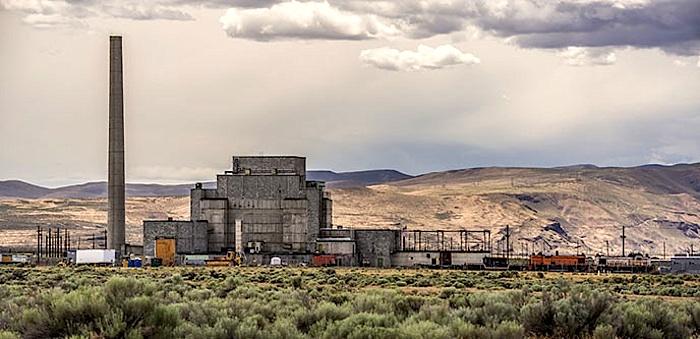
The Hanford Engineer Works was built to create large quantities of plutonium at a roughly 600-square-mile site along the Columbia River in Washington State. More than 51,000 workers at Hanford constructed and operated a massive industrial complex to fabricate, test, and irradiate uranium fuel and chemically separate out plutonium/NPS
A celebratory signing on Tuesday of a memorandum of understanding between the Interior Department and Energy Department formally established the Manhattan Project National Historical Park, one that will span three states and recount a pivotal moment in world history.
The agreement signed by Interior Secretary Sally Jewell and Energy Secretary Ernest Moniz governs how the National Park Service and Energy Department will work together to preserve, protect, and provide access to the historic resources associated with the Manhattan Project at locations in Oak Ridge, Tennessee; Los Alamos, New Mexico; and the Hanford Site in Washington state.
“Through the preservation and interpretation of the Manhattan Project, the National Park Service will share with the world the story of one of America’s most transformative scientific discoveries that fundamentally altered the course of the 20th Century,” Secretary Jewell said. “Visitors will soon be able to see the contributions of more than 600,000 Americans who played a role in this significant chapter in history. The park will also serve as a reminder that these actions and discoveries must be handled with great care, for they can have world-changing consequences.”
Establishing the 409th unit of the park system wasn't simply done. It took more than a decade of discussions, lobbying, and efforts by such groups as the National Parks Conservation Association, congressional champions, local stakeholders, and the federal agencies to bring it to fruition.
“These national park sites will share unique American stories about science, technology, war, peace, and the important roles which women and minorities played in shaping our workforce and world history," said Kristen Brengel, NPCA's senior director of legislation and policy. "These and other important issues will now be shared with visitors far and wide, by the best storytellers in the country: our National Park Service.”
Exactly how the story of the atomic bomb will be told is being determined. On Monday and Tuesday the National Park Service hosted "a Scholar’s Roundtable consisting of Manhattan Project experts to help identify the themes that will be used to tell the Manhattan Project story at the new Manhattan Project National Historical Park."
More background information on the Manhattan Project can be found at this site.



Add comment